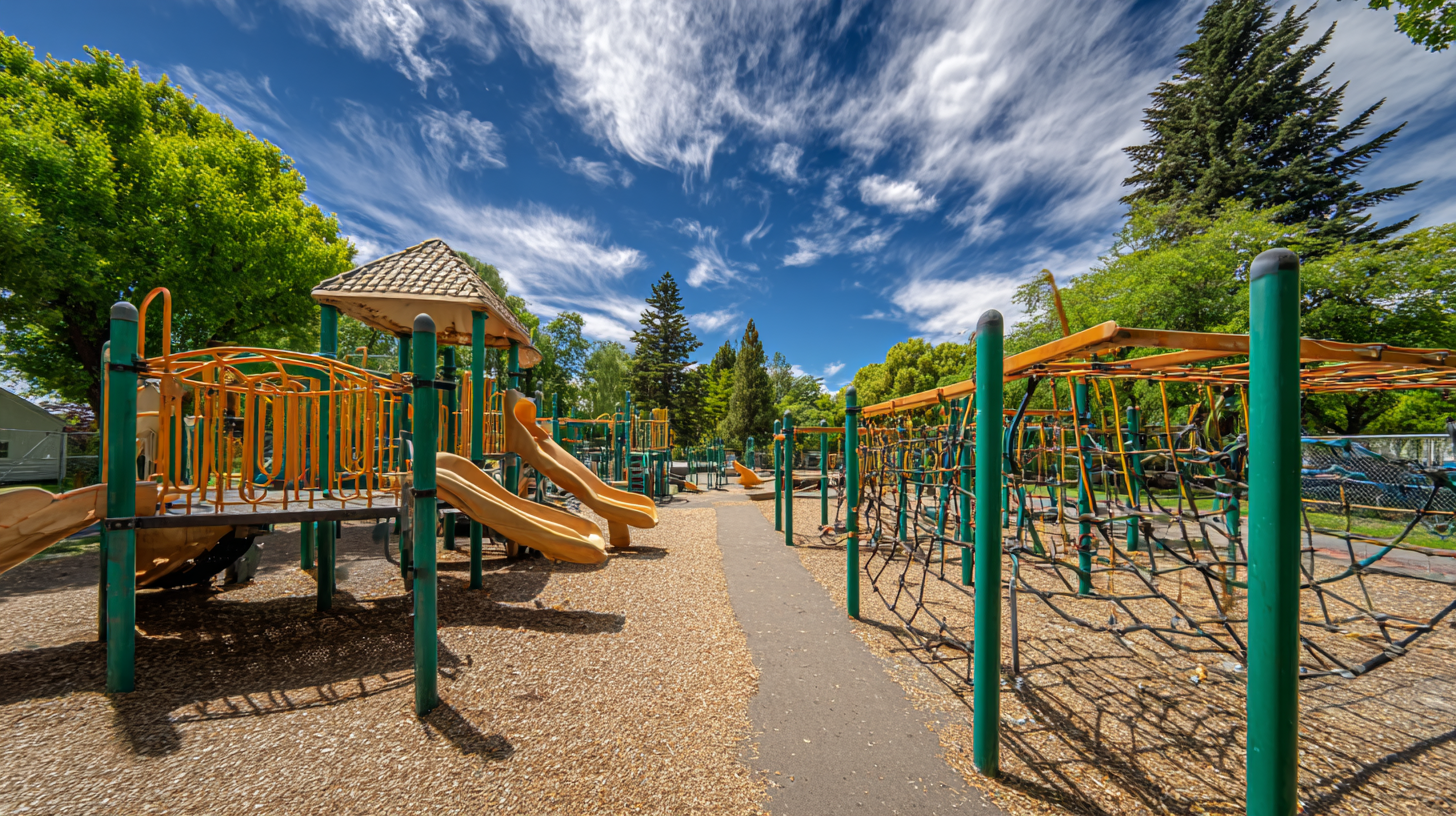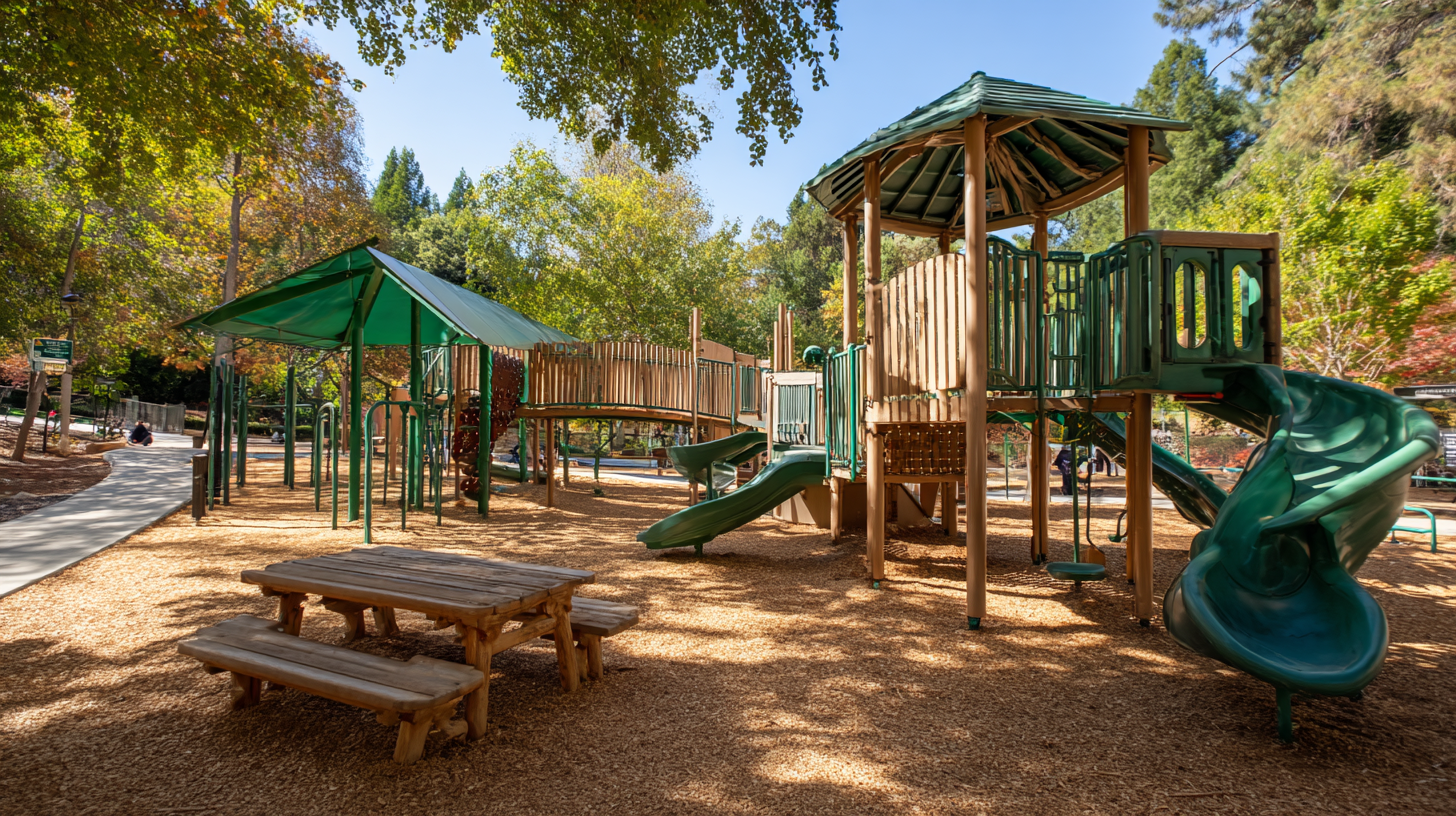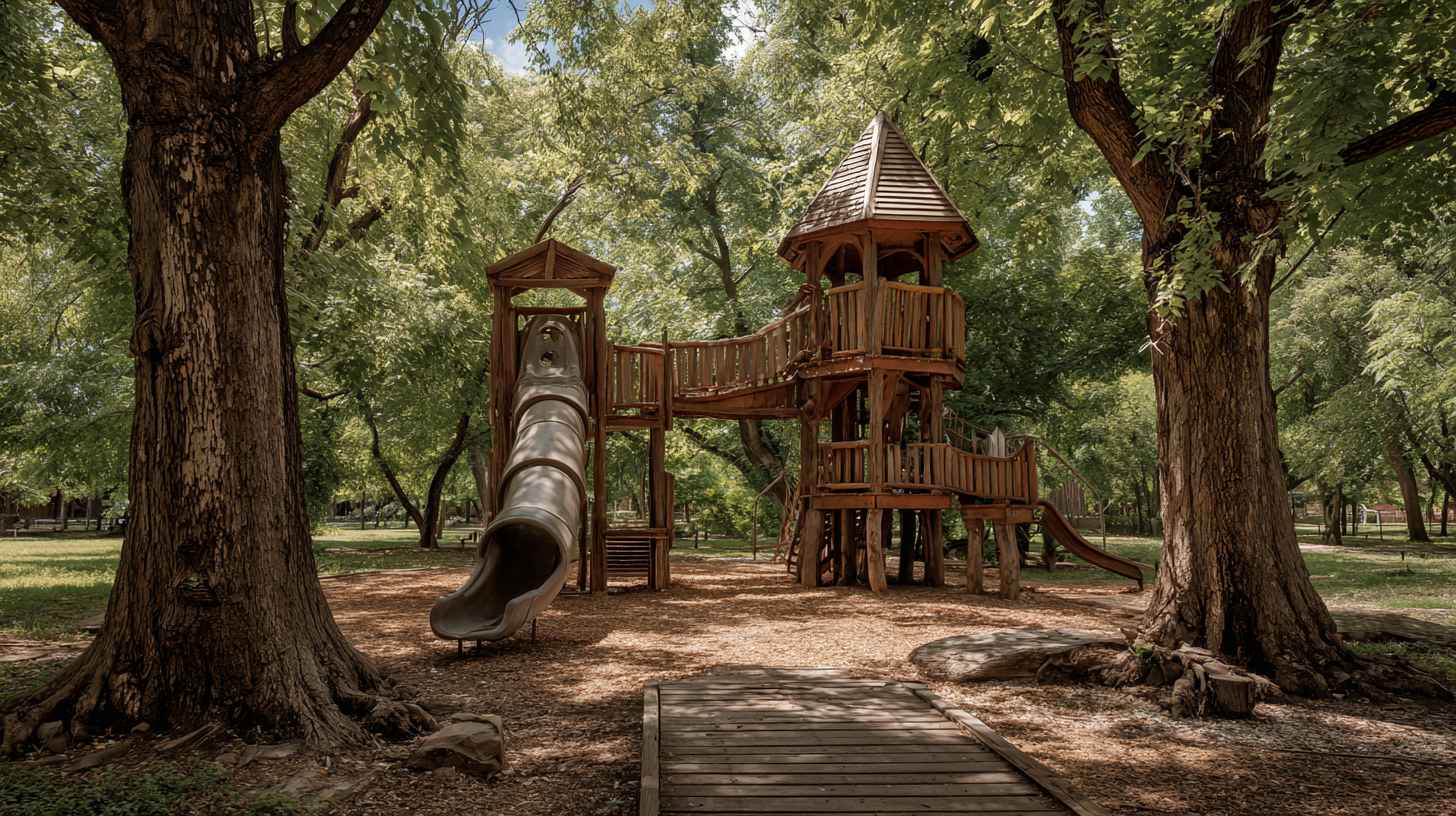 +86-13901441113
+86-13901441113




The importance of outdoor play spaces has gained significant recognition in recent years, with reports indicating that over 80% of children aged 6 to 12 engage in outdoor play regularly. As cities look to enhance community well-being, "Playground In The Park" has emerged as a focal point for urban development, promoting physical activity and social interaction among children. According to a market analysis by specific industry experts, the global playground equipment market is projected to reach $3.5 billion by 2025, driven by innovations and a growing emphasis on safety and inclusivity. This underscores a shift towards high-quality, durable equipment, particularly from manufacturers who prioritize superior materials and design, such as those tagged with 中国制造,品质升级,畅销全球. As we delve into the unique features and diverse uses of the best playground options, understanding these trends will illuminate the pivotal role parks play in fostering a healthier, more engaged community.

Choosing the right playground type for your park is crucial in creating an engaging and safe environment for children. Different playground designs cater to various age groups and abilities, ensuring that every child can participate in the fun. For instance, a park that incorporates climbing structures and slides is ideal for older children, as it promotes physical activity and social interaction. Alternatively, parks designed for younger children should include softer surfaces and smaller, age-appropriate equipment to minimize injury risks.
Moreover, considering the intended use of the playground can significantly enhance the overall experience. A well-thought-out selection of playground types can foster imaginative play, social skills, and physical development. For example, adding interactive features, such as musical instruments or sensory-rich areas, can attract children with different interests and needs. By selecting the right playground type, park planners not only create a multifunctional space that encourages outdoor activity but also promote inclusivity and community bonding among families.
When analyzing common problems associated with traditional playground equipment, it becomes evident that safety and accessibility are paramount concerns. Many standard playgrounds feature hard surfaces and equipment that can pose significant injury risks. For instance, falls from climbing structures or slides can lead to serious injuries, particularly for younger children who may lack the coordination necessary to navigate these playgrounds safely. Additionally, traditional designs often neglect the needs of children with disabilities, limiting their ability to participate fully in outdoor play.
Furthermore, the lack of diversity in playground equipment can also lead to disinterest among children. Traditional options often include basic swings, slides, and seesaws, which can become monotonous over time. Innovative playground designs that incorporate various textures, interactive installations, and sensory elements can substantially enhance the play experience. By creatively addressing these issues, park planners can transform playgrounds into inclusive spaces that foster engagement, learning, and physical development, while ensuring safety and enjoyment for all children.

In recent years, playground designs have evolved significantly to prioritize not only fun but also safety. Innovative features are being integrated into playgrounds to address common safety concerns, ensuring that children can explore and play in a secure environment. For instance, soft surfacing materials, such as rubber mats and synthetic grass, are replacing traditional concrete or grass areas. These surfaces reduce the impact of falls and minimize injuries, creating a safer play zone for kids of all ages.
Another noteworthy advancement is the incorporation of modular play structures that offer varied experiences within a single unit. These structures often feature enclosed designs and clear sightlines that allow caregivers to supervise children easily. Additionally, many modern playgrounds include sensory play elements, such as textured walls and interactive panels, which help engage children’s senses while encouraging inclusive play. By designing playgrounds with safety in mind, communities are fostering healthier, more active, and safer spaces for children to develop and thrive.
Inclusive playgrounds are designed with the idea of providing enjoyable and accessible play experiences for children of all ages and abilities. These spaces often feature adaptive equipment such as sensory panels, wheelchair-accessible swings, and low-to-the-ground climbing structures, allowing children with different needs to engage in play alongside their peers. This fosters social interactions and encourages inclusivity, creating a vibrant environment where every child can thrive.
In addition to physical accessibility, inclusive playgrounds often incorporate universal design principles, ensuring that the flow of the space is navigable for everyone. Engaging sensory experiences are also highlighted, with elements such as textured paths, sound-making installations, and interactive artistic features. These playgrounds serve not only as places for recreational activities but also as platforms for learning and development, helping children build important social skills and friendships while celebrating diversity in play.
| Playground Type | Age Group | Key Features | Accessibility | Educational Benefits |
|---|---|---|---|---|
| Natural Playgrounds | 2-12 years | Logs, rocks, and plants | High accessibility | Promotes creativity and imagination |
| Inclusive Playgrounds | All ages | Adaptive swings, ramps | Fully accessible | Fosters social interaction |
| Adventure Playgrounds | 5-15 years | Rope courses, climbing walls | Moderate accessibility | Enhances physical fitness |
| Sensory Playgrounds | 3-10 years | Interactive sensory panels | High accessibility | Stimulates sensory exploration |
| Fitness Playgrounds | 8-18 years | Exercise equipment, obstacle courses | Variable accessibility | Promotes healthy lifestyle choices |
 Outdoor play areas are essential for children's development and community engagement, yet they face numerous maintenance challenges. According to a report by the American Society of Landscape Architects, nearly 30% of public playgrounds require immediate safety improvements due to wear and tear. One creative solution to these challenges is the implementation of durable, weather-resistant materials in playground design. Modular components made from recycled plastics not only extend the lifespan of play structures but can also significantly reduce maintenance costs—by up to 50%, as highlighted in a study published by the National Association of State Park Directors.
Outdoor play areas are essential for children's development and community engagement, yet they face numerous maintenance challenges. According to a report by the American Society of Landscape Architects, nearly 30% of public playgrounds require immediate safety improvements due to wear and tear. One creative solution to these challenges is the implementation of durable, weather-resistant materials in playground design. Modular components made from recycled plastics not only extend the lifespan of play structures but can also significantly reduce maintenance costs—by up to 50%, as highlighted in a study published by the National Association of State Park Directors.
Additionally, engaging the local community in maintenance efforts can foster a sense of ownership and responsibility. Programs that involve parents and volunteers in regular upkeep activities not only improve the playground's condition but also strengthen community bonds. The Recreation Management magazine indicates that parks incorporating community engagement and stewardship programs have seen a 40% increase in participation and satisfaction rates among families. By embracing innovative materials and community-driven maintenance solutions, parks can create safer, more enjoyable outdoor play environments for children that stand the test of time.